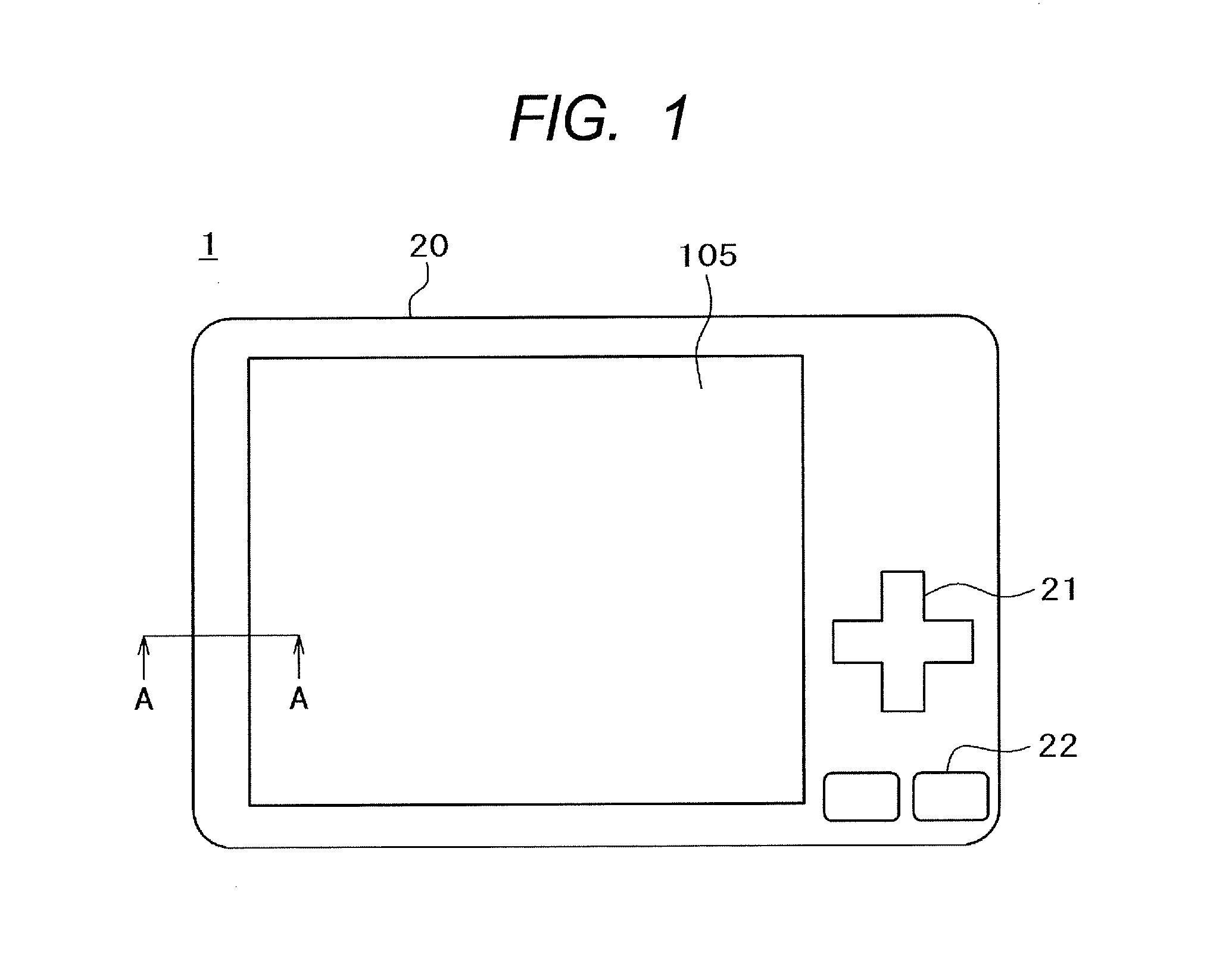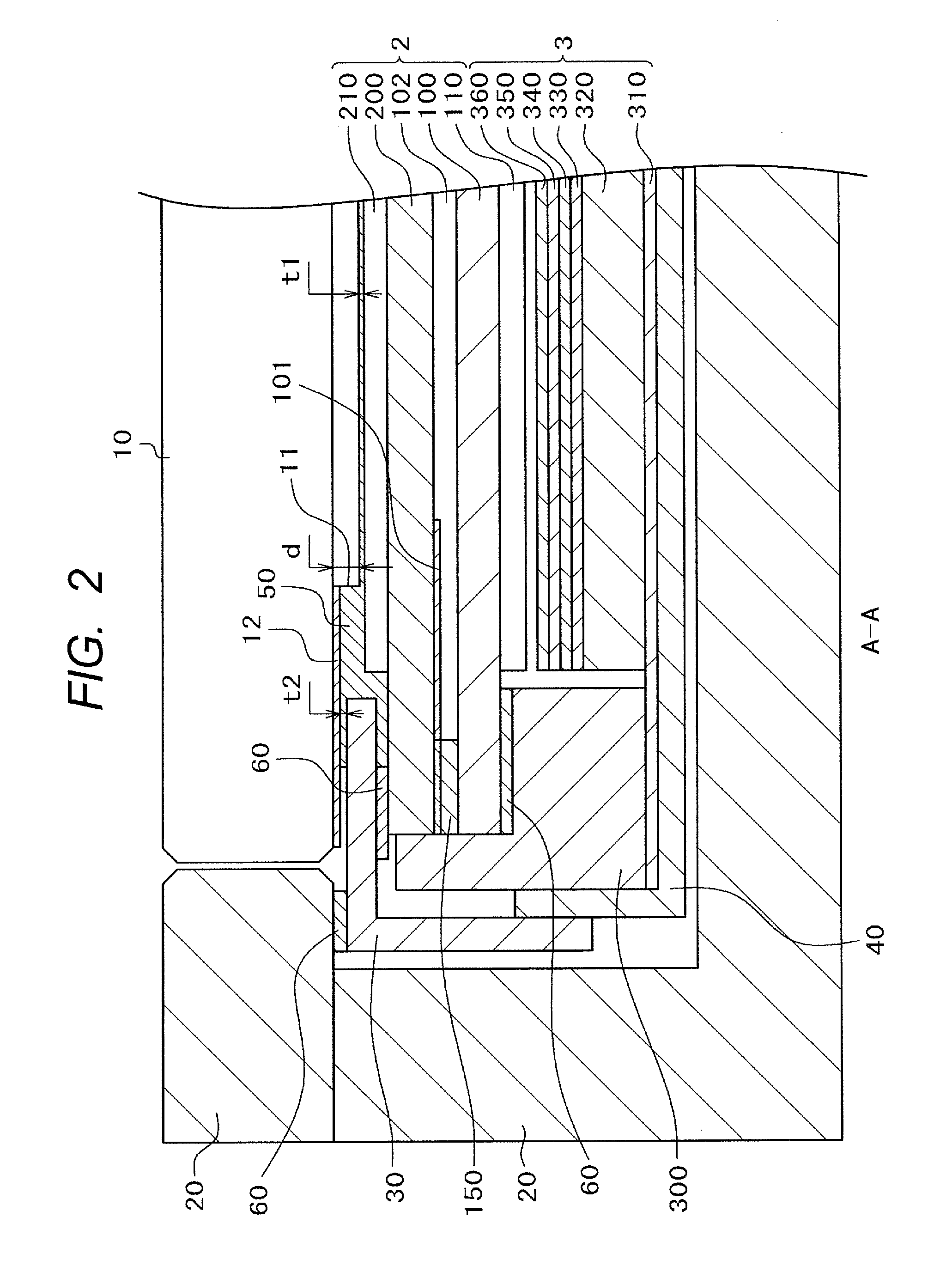Display device
a technology of display panel and display panel, which is applied in the direction of display/control unit casings, instruments, and electrical apparatus casings/cabinets/drawers, etc., can solve the problems of reducing contrast, affecting the appearance of the display panel, so as to reduce the thickness of the adhesive material between the display panel and the front window, prevent the effect of substrate deformation due to cure shrinkage and reduce the thickness of the adhesive material
- Summary
- Abstract
- Description
- Claims
- Application Information
AI Technical Summary
Benefits of technology
Problems solved by technology
Method used
Image
Examples
first embodiment
[0040]FIG. 1 is a plan view of a DSC 1 as an example to which the present invention can be applied. It is needless to say that the present invention can be applied not only to the DSC 1 but also to other displays. In FIG. 1, a control button 21, a switch button 22, and the like are arranged on the right side of a display area 105. Because the DSC 1 has an increased number of pixels and a high image quality is required, it is required to exhibit a high contrast even in the periphery of the display area 105.
[0041]FIG. 2 is an A-A cross-sectional view of FIG. 1 showing a feature of the present invention. In FIG. 2, a liquid crystal display panel 2 has a configuration described below. Namely, a liquid crystal layer 102 is sandwiched between a TFT substrate 100 including a TFT and a pixel electrode arranged in a matrix form and an opposing substrate 200 formed thereon with a color filter and the like, a lower polarizing plate 110 is bonded to a lower side of the TFT substrate 100, and an...
second embodiment
[0054]Although the present invention was described in association with an application to the liquid crystal display device in the first embodiment, the present invention is not limited to the liquid crystal display device but can also be applied to an organic EL display device. The organic EL display device has a light emitting display area, and therefore it does not require a backlight. However, even in the case of such a light emitting device, there can be stray light in the front window.
[0055]FIG. 6 is a schematic cross-sectional view of an organic EL display panel 4. In FIG. 6, an organic EL layer 420 is formed on an element substrate 400, and an image is formed by the organic EL layer 420 emitting light upon receipt of a video signal. Because brightness of the organic EL layer 420 may be deteriorated by moisture, it is generally covered by a sealing substrate 410 made of glass to prevent the moisture in an atmosphere from entering. The element substrate 400 and the sealing subs...
PUM
| Property | Measurement | Unit |
|---|---|---|
| thickness | aaaaa | aaaaa |
| thickness | aaaaa | aaaaa |
| thickness | aaaaa | aaaaa |
Abstract
Description
Claims
Application Information
 Login to View More
Login to View More - R&D
- Intellectual Property
- Life Sciences
- Materials
- Tech Scout
- Unparalleled Data Quality
- Higher Quality Content
- 60% Fewer Hallucinations
Browse by: Latest US Patents, China's latest patents, Technical Efficacy Thesaurus, Application Domain, Technology Topic, Popular Technical Reports.
© 2025 PatSnap. All rights reserved.Legal|Privacy policy|Modern Slavery Act Transparency Statement|Sitemap|About US| Contact US: help@patsnap.com



